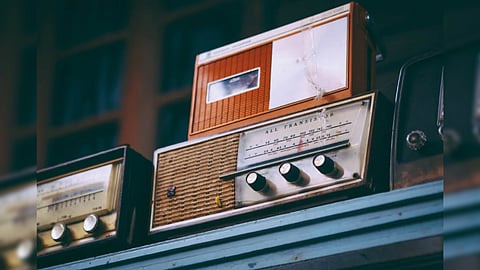

Today, World Radio Day, is a good occasion to remember that almost all popular media phenomena—live sports and music, talk shows, 24x7 news, localised weather and traffic updates—stand on a foundation laid by radio. Just as Roosevelt’s fireside chats to Americans in the 1930s are the inspiration for Narendra Modi’s ‘Mann Ki Baat’, many of the formats followed by the entertainment industry today have origins in radio.
In India, alas, radio is an opportunity lost. True, the extent of radio’s reach and the diversities it addresses in India are impressive. The state broadcaster All India Radio operates the largest radio network in the world, covering 92 per cent of the country’s area and reaching 99 per cent of its population. It has 420 stations offering programming in 23 languages and 179 dialects and 647 news bulletins daily. Prasar Bharati’s NewsonAir app live-streams a staggering 240 state radio channels. Plus, there are 388 private FM radio stations broadcasting to 107 cities. When the third phase of FM privatisation is completed, 236 Category C and D cities will have their own FM channels.
But the fact remains that the medium is held in thrall to the state, which constrains it from attaining its true potential. Having to abide by the sole principle of fidelity to the state, radio in India is imprisoned in a time warp, stranded in 1950s nostalgia.
Of all the mass media, radio has borne the brunt of the state’s unyielding parental control. While all other media such as press, television, and internet have been free to operate largely unfettered in the news and current affairs space, radio has been kept under a tight leash. News is exclusively the preserve of the state broadcaster in India. While private FM channels can broadcast commerce-oriented entertainment programming in the cities, they are not allowed to touch news and current affairs.
This lop-sided limitation has been challenged in the Supreme Court by free speech advocates only to be met with governmental stonewalling. In 2017, the Home Ministry took the plea that allowing news on private radio channels could pose jeopardise national security if anti-national forces used them for their propaganda. It said the government does not have the wherewithal to monitor the content of private channels. Yet, it has given licences to no less than 900 news television channels and thinks nothing of monitoring their 24x7 content.
The government says it is open to private channels broadcasting All-India Radio’s news bulletins. This proposal, rebuffed by most private broadcasters, only indicates just how invested the state is in the idea of controlling news on radio. It also illustrates just how skewed its censorial thinking is: while radio is tethered by an outdated policy, rumours are allowed to run wild on WhatsApp and TV debates routinely spew communal poison.
The theme for the World Radio Day this year is ‘radio and peace’. Indeed, at a time when conflicting narratives are fomenting polarisation in society, radio would be an ideal medium to promote dialogue and understanding. Two contending actors talking to each other on radio would establish dialogue as a way to resolve conflict. A simple call-in would serve to bring public opinion to the attention of authorities. There could be no better platform for local arts to flourish than radio.
It’s a pity therefore that India, which claims to be the mother of democracy, should hold this medium captive. Or as Reporters Without Borders has pointed out, how incongruous it is that India is the only democratic country in the world that still does so.
Visit news.dtnext.in to explore our interactive epaper!
Download the DT Next app for more exciting features!
Click here for iOS
Click here for Android